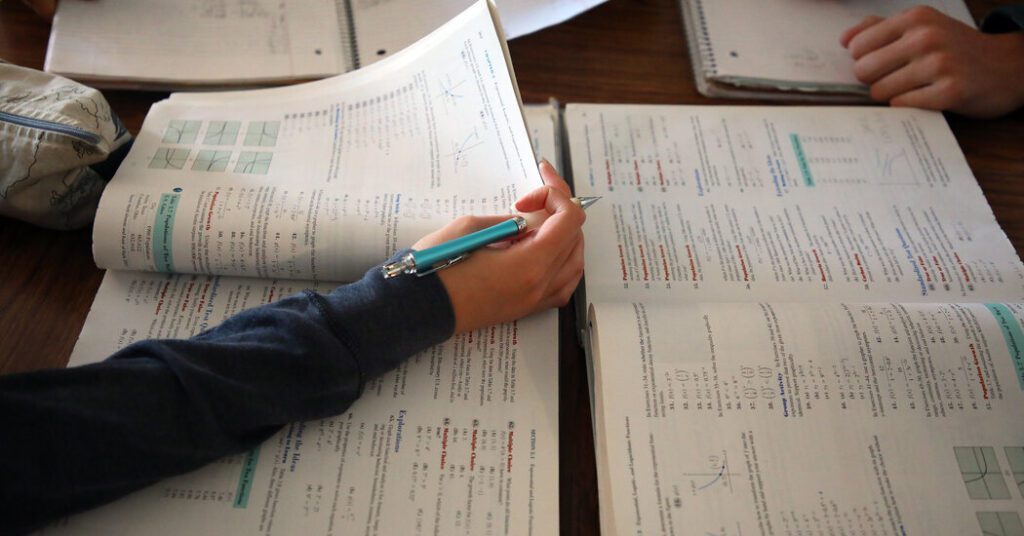For the past three years, American schools have been in an unusual situation: They have had plenty of money to spend.
The federal government has pumped $190 billion into pandemic aid for schools, with the largest chunk of that, $122 billion, going to help students recover in 2021. Overall, this was the largest one-time federal investment in American education, but it came with a big question: Will it work?
Two separate studies published Wednesday suggest the money has helped, but not as effectively as hoped.
“Money certainly contributed to the recovery,” said Thomas J. Cain, a Harvard economist who led one of the studies. “Could money have had a bigger impact? The answer is yes.”
The study, by researchers from Harvard, Stanford and Dartmouth Colleges and one from the University of Washington, came to similar conclusions based on test results for the 2022-23 school year for third- to eighth-graders in about 30 states: For every $1,000 in federal aid, school districts saw slightly better math and reading scores.
The Biden administration hailed the results as evidence that federal investments made in March 2021, when the pandemic was still ongoing and some schools were closed, helped students recover from their learning. “This new data clearly shows that the president's investments in education helped hasten learning recovery for millions of students,” said Neera Tanden, domestic policy adviser to President Biden.
But economists and education policy experts say the overall cost-effectiveness was modest: Previous studies have found that smaller class sizes, for example, can be more cost-effective.
Douglas N. Harris, an economist at Tulane University who was not involved in the study, said there may also be other benefits that don't show up in test scores, such as improved students' mental health.
He said based on test scores alone, “it doesn't pass the cost-benefit test.”
In a country with about 50 million students in public schools, it's hard to achieve results at scale, and even small improvements in test scores can have long-term benefits, such as boosting students' future earnings.
But the overall results raise questions about whether record amounts of federal aid were delivered with an adequate level of oversight.
Congress placed few limitations on this largest funding round: Of the $122 billion, school districts were required to spend only 20% on recovery, a figure that many education experts criticized as too little.
“I think that if there had been more pressure around academic performance, if the money had been used for that purpose, and if there had been more guidelines, the funding could have made a bigger difference,” said Dan Goldhaber, a co-author of the study and vice director of the American Studies Institute at the University of Washington.
The Biden administration has said the funding is intended to give school districts important flexibility to respond to local needs during the crisis. The administration has focused on issuing guidance to districts, highlighting the need to invest in tutoring and summer school, for example.
But with more than 13,000 school districts across the nation and few clear requirements, there has been wide variation in how the funds are spent.
Some districts committed to frequent small-group instruction, which research has shown to be effective. Many hired new teachers, counselors, social workers and other staff. Others poured money into renovating buildings. Still other districts faced budget problems, diverted most of their funds to business as usual and are now facing severe cuts.
The new study doesn't evaluate which strategies produced better results, in part because there is little tracking of exactly how federal funds were spent.
Other studies suggest that choices mattered: Some districts saw outsized gains by focusing on research-backed academic interventions or student mental health.
But ultimately, many students are not keeping up with the pace of catching up on pandemic learning losses, especially with federal aid expiring at the end of the upcoming school year.
Still, education experts say the money has made a difference: Students may have fallen further behind without the federal aid, which was targeted to lower-income school districts that have suffered bigger losses from the pandemic and remote learning.
“The funding has been effective in filling some of the gaps that have arisen,” Professor Cain said.
Test scores could improve further if schools benefit from long-term investments such as upgrading HVAC systems and cleaning the air, said Rebecca Sibilia, executive director of EdFund, a research and policy group that focuses on school finance.
Numerous studies have shown that increased spending on education leads to better outcomes for students, especially those from low-income families.
In a way, the results just underscore the extent of the pandemic's impact on students who fell far behind, especially in math.
Research suggests that at the current pace of recovery, five times as much federal aid would have been needed to help all students catch up fully.

